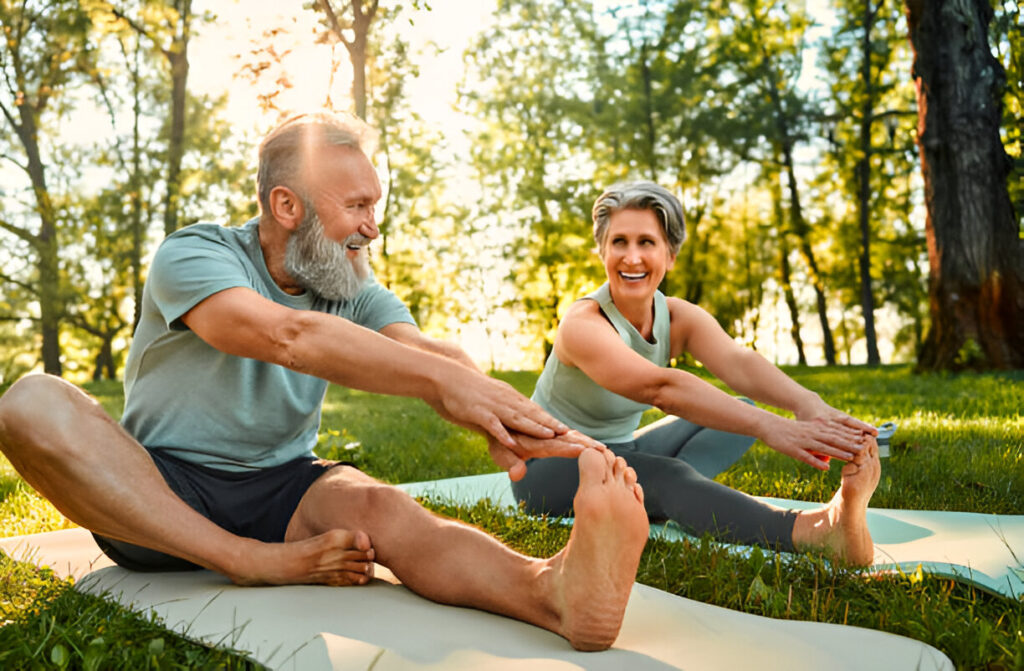
In today’s fast-paced world, where sedentary lifestyles and stress have become commonplace, the ancient practice of yoga offers a holistic approach to developing both flexibility and strength. This time-tested discipline, originating from India thousands of years ago, has evolved into a powerful tool for modern fitness enthusiasts seeking a balanced approach to physical development. According to Harvard Health, regular yoga practice can significantly improve both flexibility and muscle strength while promoting better posture and body awareness.
Understanding the Connection Between Flexibility and Strength
The relationship between flexibility and strength is often misunderstood. While many people view them as separate aspects of fitness, they are actually deeply interconnected. Research published in the Journal of Sports Science & Medicine demonstrates that optimal physical performance requires a careful balance of both elements. When muscles are both strong and flexible, they’re better equipped to support daily activities and prevent injuries. The American Council on Exercise (ACE) explains that yoga uniquely addresses this dual requirement through its diverse range of poses and movements.
The Science Behind Yoga’s Effectiveness
Modern scientific research continues to validate yoga’s benefits for physical development. A comprehensive study featured in the International Journal of Yoga showed that consistent yoga practice leads to significant improvements in both muscular strength and flexibility within 8-12 weeks. The National Institutes of Health reports that yoga’s combination of static holds and dynamic movements triggers multiple physiological responses that enhance muscle function and joint mobility.
Key Yoga Poses for Building Strength
Building strength through yoga involves engaging multiple muscle groups simultaneously, often using body weight as resistance. According to Yoga Journal, these fundamental poses are particularly effective:
- Chaturanga Dandasana (Four-Limbed Staff Pose): Strengthens arms, shoulders, and core
- Warrior Series: Builds leg strength and stability
- Plank Pose: Develops core and upper body strength
- Chair Pose: Strengthens quadriceps and gluteal muscles
The Mayo Clinic confirms that these poses, when practiced regularly with proper form, can lead to significant improvements in muscular strength comparable to traditional resistance training.
Essential Poses for Enhancing Flexibility
Flexibility development through yoga focuses on safe, progressive stretching combined with proper breathing techniques. The National Academy of Sports Medicine recommends these key poses:
- Forward Folds: Lengthens hamstrings and lower back muscles
- Pigeon Pose: Opens hip flexors and improves hip mobility
- Cobra Pose: Increases spine flexibility
- Triangle Pose: Stretches multiple muscle groups simultaneously
Healthline emphasizes the importance of holding these poses for 30-60 seconds while maintaining steady breathing to achieve optimal flexibility gains.
Creating a Balanced Practice Routine
Developing both strength and flexibility requires a well-structured approach. The American College of Sports Medicine recommends practicing yoga at least 3-4 times per week for optimal results. A typical session should include:
- 5-10 minutes of warm-up
- 20-30 minutes of strength-building poses
- 20-30 minutes of flexibility work
- 5-10 minutes of relaxation and meditation
WebMD suggests that beginners start with shorter sessions and gradually increase duration and intensity as their practice develops.
The Role of Breath Work in Enhancing Performance
Proper breathing techniques (pranayama) play a crucial role in maximizing the benefits of yoga practice. The Cleveland Clinic explains that controlled breathing increases oxygen delivery to muscles, enhances focus, and helps maintain proper form during challenging poses. Studies featured in the Journal of Physical Therapy Science demonstrate that synchronized breathing and movement significantly improve both strength and flexibility gains.
Avoiding Common Mistakes and Preventing Injury
Safe practice is essential for long-term progress. According to Sports Medicine, common mistakes include:
- Forcing poses beyond current capabilities
- Neglecting proper alignment
- Rushing through movements
- Inconsistent practice
The American Physical Therapy Association recommends working with qualified instructors and listening to your body’s signals to prevent injury and ensure proper progression.
Measuring Progress and Setting Goals
Tracking improvements in both strength and flexibility helps maintain motivation and ensures balanced development. VeryWell Fitness suggests regular assessments of:
- Hold times in challenging poses
- Range of motion in key joints
- Balance and stability measures
- Overall energy levels and recovery time
Documentation through photos or videos can help visualize progress over time.
Complementary Practices and Lifestyle Factors
Maximizing the benefits of yoga requires attention to supporting factors. The National Sleep Foundation emphasizes the importance of adequate rest for muscle recovery and flexibility improvements. Additionally, proper nutrition plays a crucial role – the Academy of Nutrition and Dietetics recommends a balanced diet rich in protein, healthy fats, and anti-inflammatory foods to support tissue repair and flexibility.
Conclusion: Embracing the Journey
Developing flexibility and strength through yoga is a gradual process that requires patience, consistency, and mindfulness. The practice offers a sustainable, lifelong approach to physical development while providing numerous additional benefits for mental and emotional well-being. Remember that everyone’s journey is unique, and progress occurs at different rates. Focus on maintaining regular practice, proper form, and a balanced approach to achieve optimal results.
As you continue your yoga journey, remember that the ultimate goal extends beyond physical improvements. The International Association of Yoga Therapists reminds us that the integration of mind, body, and breath leads to comprehensive wellness that enhances all aspects of life. Whether you’re just beginning or deepening an existing practice, the path of yoga offers endless opportunities for growth and development in both flexibility and strength.